How To Grow Autoflowering Seeds Using SCROG
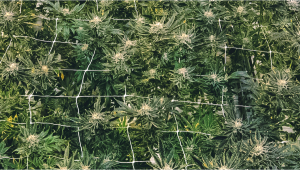
- 1. What does scrog mean?
- 2. Why scrog cannabis plants?
- 3. How it works and what can i use?
- 4. Hands-on training
- 5. Top tips on scrog
- 6. Easy diy single plant scrog
- 7. Best recommended strains for scrog
- 8. In conclusion
When growing Cannabis at home, any extra hints and tips can go a long way in boosting yields. Below we explain about the training method known as Screen of Green, how it works and what to consider next time you grow from seed to harvest.
1. What Does SCROG Mean?
SCROG refers to when a screen is applied to a grow room, to multiple or one huge plant, to be trained and manipulated through the screen. You may have heard the term Sea of Green (S.O.G) which describes a large number of smaller-sized plants grown close together. The end goal is to achieve what appears to be a sea of plants covering wall to wall the indoor grow space. When adding a screen into the mix, the dynamic of the garden dramatically changes, as everything is now given its own exclusive place on the screen. Unlike the S.O.G method where Cannabis plants are left to grow without any training or manipulation prior to flowering, Screen of Green requires much more hands-on attention.
2. Why SCROG Cannabis Plants?
As mentioned, the scrog method (aka scrogging) works by stretching the branches of cannabis plants into a screen, creating a uniform canopy. Doing this has several benefits such as:
- Spreading the canopy uniformly allows light to reach deeper, which results in better quality flowers and bigger yields.
- Scrogging will also improve airflow between the buds, which reduces the chances of mold or bugs.
- The scrog net also serves as support so that the heavy buds don’t snap the branches.
All of these benefits result in really thick, dense buds but remember that the branches below the scrog net will not get much light so you want to prune the lower part of the plant (branches and leaves) as they will not matter when growing this way. By removing lower plant growth you encourage your plants to focus their energy at the top, producing beautifully frosty flowers.
3. How It Works And What Can I Use?
The most important thing to consider is for the space in the screen to be large enough to easily feed growth tips through.

Making your own homemade wooden frame to fit around your chicken wire or pea netting is a great idea and a good way to customize your grow space.
4. Hands-On Training
One thing that is required when working with autoflowering Cannabis plants and using a screen, is spending time manipulating the direction your plants grow. Once the growth tips are in place and have been allocated their own unique space until the time of harvest, the only thing you may need to do is to prune your plants, removing anything below the screen.
Pruning is the art of removing foliage and exposing a bare main stem, to allow the remaining canopy to absorb all of the growth energy. By doing this your top buds will be as fat as possible, without any lower, underdeveloped flowers forming.
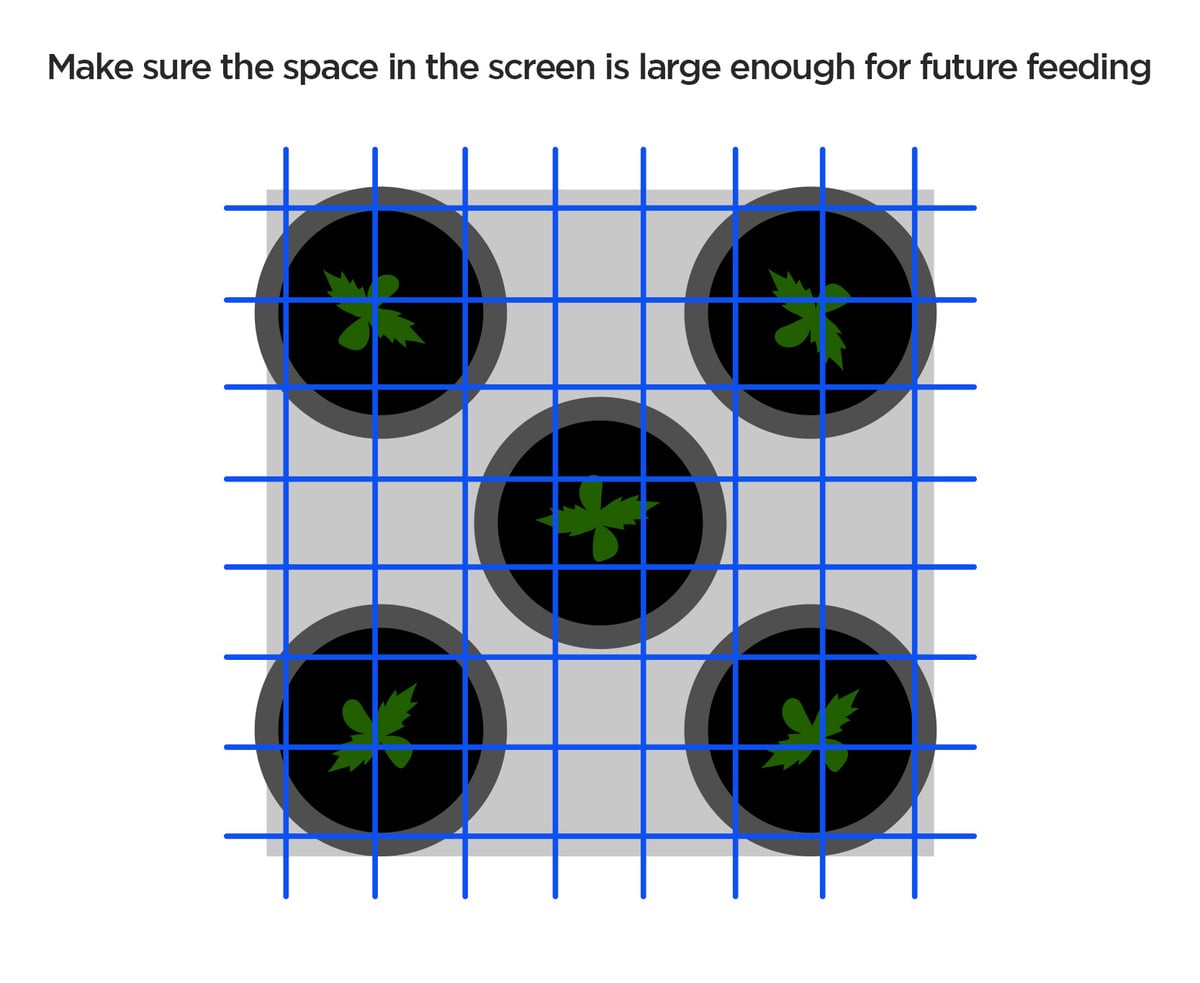
5. Top Tips On SCROG
1. Make sure your screen or net can easily be raised and the plants accessed if necessary. A screen fixed in place may be problematic in the event of an emergency involving you getting to your autoflowering ladies.
2. If making a homemade screen from bamboo cane, make sure they are thoroughly washed in alcohol, hydrogen peroxide, or bleach cleaning solution. The last thing you want is to infest your crop with pests.
3. Do not overcrowd your grow space, and allow each plant to grow out into the screen. It may take some time and moving certain shoots around as the plants grow, however, the end result is well worth it.
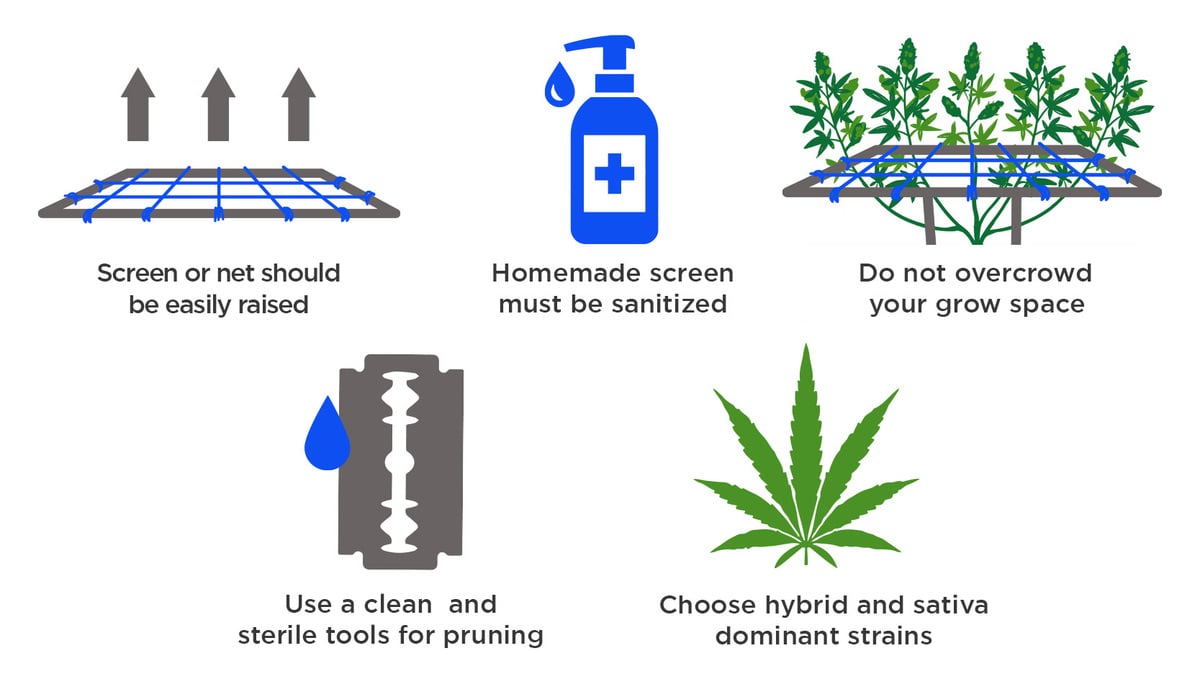
4. If pruning, be sure to use a clean and sterile razor blade or scalpel. You should not need to prune much foliage if the technique has been performed correctly.
5. Some cultivars are better suited than others when it comes to Screen of Green. Hybrid and sativa dominant strains are much better thanks to their large size and growth structure.
6. EASY DIY SINGLE PLANT SCROG
Building and installing a cheap DIY, single plant scrog is super easy, takes next to no time, and costs less than the change floating around in your car ashtray. All your going to need is:
- Some PVC piping - any diameter will work, but thinner is better here. You will need at least 2 meters (6 feet) - we like to build a 1.5 foot by 1.5 foot square
- Corner connectors for the PVC pipe
- Some netting or something similar - chicken wire, plastic shade cover, or even just some twine that can be threaded to resemble a net. You want larger openings, as it is just to hold the branches in place.
- A saw to cut the PCV pipe to size.
- Duct tape
Then all you have to do is:
Step 1
Cut your PVC pipe to the size you want. For single pots, a 1.5-foot by 1.5-foot square works well for us, but the more significant the plant, the larger the square.
Step 2
Connect the pipes together with the corner pieces and secure them with duct tape
Step 3
Attach the netting or twine to the frame, making sure it is secure and won't move when you feed the branches through.
Step 4
Cut two, three, or four legs. All three options can work, and it really depends on your pot size and diameter. Get creative and see what works for you.
Step 5
Use the duct tape (or any strong tape) to attach the legs, and then either dig the legs into the substrate or use the tape to stick the legs to the outside of the pot.
And there you have it. An easy, cheap, and effective scrog for single plants. Now you can easily train your plants to grow a nice even canopy with minimal effort. It doesn't have to be perfect, but just remember that the net is there to support the branches and keep the full canopy at one level to promote even growth throughout all of the budding sites! Scrogging is (in our opinion) the best training method out there for autoflowering cannabis strains. It doesn't overly stress the plant, but if you want an even simpler method then you can simply tie down the main stem and branches to create that even canopy we all strive for.
7. Best Recommended Strains For SCROG
A huge yielding variety that performs amazingly well under Screen of Green.
A sativa dominant hybrid that stays medium height but grows very bushy.
A very tall and highly productive hybrid strain, flowering in 70 days.
8. In Conclusion
As a beginner grower works their way up and learns about the different types of plant training, SCROG is certainly at the more advanced scale of the spectrum. It takes experience, as well as a thorough understanding of how autoflowering and photoperiod cultivars grow. The advantages of growing with the Screen of Green method are that only big-sized, top-heavy buds will be produced, no concern over smaller sized flower buds and under the screen is totally clean of foliage, bugs and optimal in terms of airflow around the base of the plants.








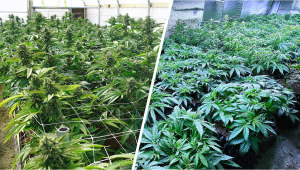
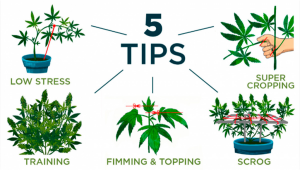
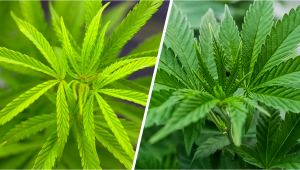

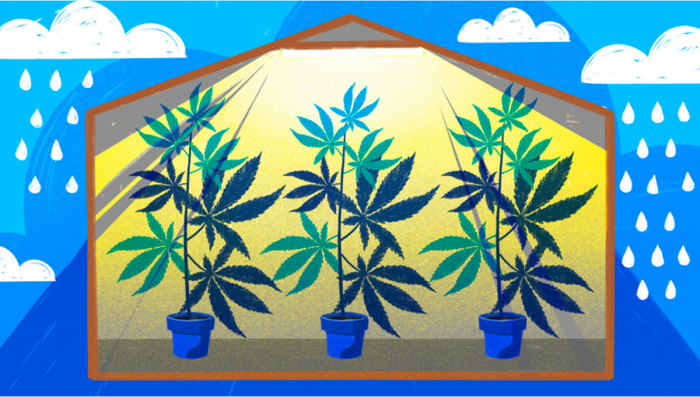
Comments